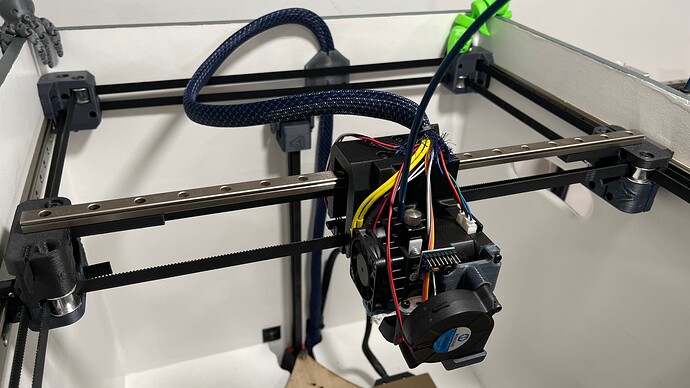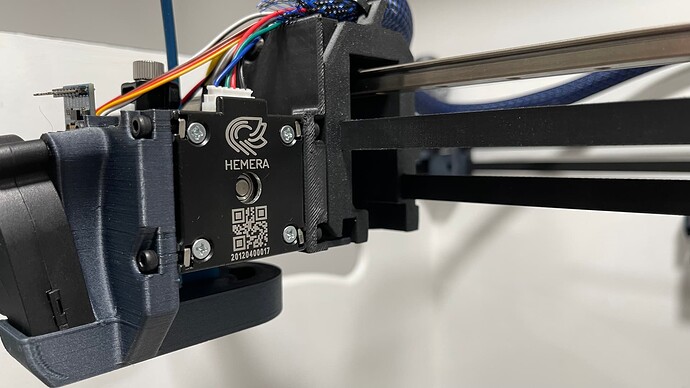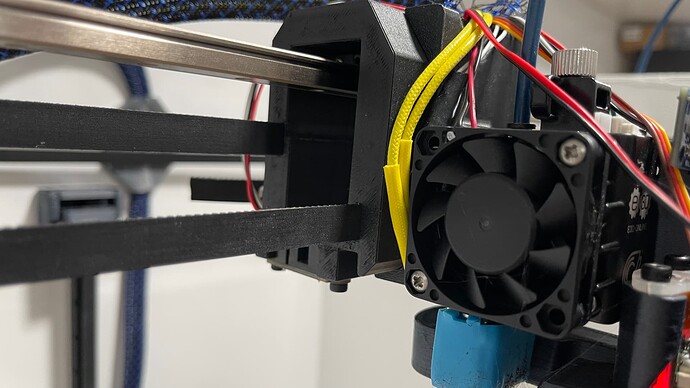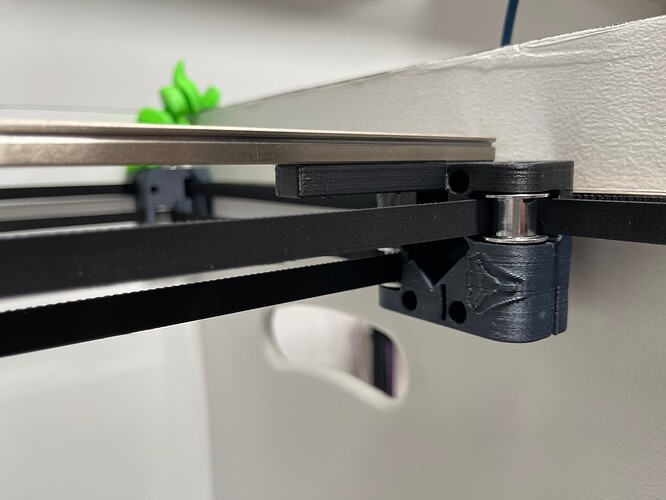So I’m getting the itch to build a new 3d printer. Voron is the word on everyone’s lips right now, but the MP3DP is also coreXY. Anybody out there done a comparison? With the right frame design I bet the MP3DP could run just as fast.
What do you call fast?
I have not done a comparison as I do not owe a Voron but…
I have been running it at 150mm for perimeter and 200mm infill with accell at 3500, I can run it faster, more accell, but then I start getting some resonance artifacts (ghost)
Also I’m running Klipper and did some modification to the X axis, I ditch the Carbon fiber tube for a linear rail.
What’s your linear rail bolted to? It’s self supporting?
I should have added those pictures on my build threat… I will do it right now…
Well I have been dimensional tuning my builds and I have to say it…I don’t want to say it… Extrusion makes this very simple to do. I have them all square in all axis to well under .2mm over 100mm squares. I think.
I also have to say, Adjusting 5 rails to all be parallel and perpendicular is not easy. It does take printing parts to do as there are is no easy way to measure rails against each other without special tools.
I want to do some refinements to this design. I now know I am far more interested in dimensional accuracy than low part count.
Sorry once again if I am teaching you how to “suck eggs” here;
Start by making a “pinch stick” to measure the diagonal - you don’t have to be fancy with the routed grooves, but you’ve got the LR to do it with so why not? (I keep meaning to get around to making a nice keeper version but usually end up with a couple of sticks and two screws, which is completely dodgy, but can be made to suit any opening size.
Don’t use this for parallel measurements.
To check parallel if the dimension is critical I make jigs from scrap MDF - simply by gluing two cross pieces on a suitable offcut at EXACTLY the required dimension but with the long ends overlapping a bit. This makes a kind of tee square that you can drop across the tube or cupboard top and allows you to adjust the sides until they fit the cross pieces.
As long as your scrap has one straight edge and you use that with a decent square - you have a one-use jig for the purpose. Mostly I use wood glue and screws and just throw the thing away at the end of the job - but you could use hot glue if you want to knock it apart.
I’ve found over the years it’s a lot quicker and easier to make a jig (call it a “special tool” if you must) than to muck around with tapes and rules and the inaccuracies they bring.
For folks that are CNC cutting wooden enclosure parts for the repeat, what is the workflow?
(I’m a long way from being ready, but…)
Do you open the Fusion360 source, size everything, then what?
Are there any ‘stock’ sized panels out there (300mm x 300mm rough sized build plate)?
Not really we all made our own because we are all using different beds with different mounting hole needs.
The problem is on my build the XY rails are at different heights so direct comparison will not work. The pinch sticks might help but you would need to do some trig.



